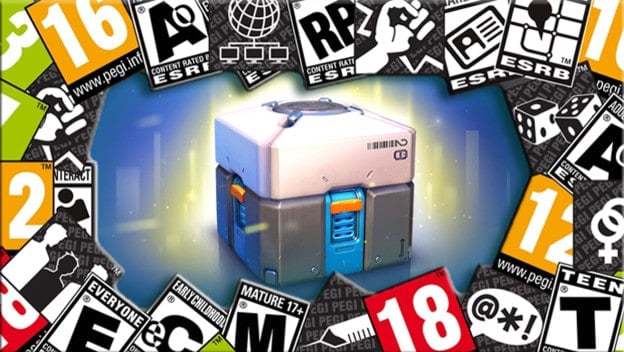The ESRB is finally starting to take action regarding loot boxes. But, it is not exactly in the way folks may expect. Entertainment Software Rating Board President Patricia Vance says the company is going to add a label to games with DLC and extra purchases that says in-game purchases are in the title.
That’s it. That’s the big move to try and alert people to a questionable practice. One label that does not even mention loot boxes specifically, just in-game purchases as a whole.
Of course, there may be some concerns that the ESRB is overstepping by even just placing a label on the boxes of games that do have additional purchases. But this is not even that. This is an alert, just the same as the one that says, “Online Interactions Not Rated by the ESRB.” It is not the ESRB altering the actual rating of the game because of these additional, optional purchases. It is not a warning label that will say something like, “Caution: This Game Wants More Money.” It is just going to be a note saying that in-game purchases are present.
If anything, I would say the ESRB is not doing enough with this upcoming measure to make loot boxes more visible. All it is saying with this label is that in-game purchases are present in a game. It even notes that this could mean standard DLC, season passes, subscriptions or microtransactions in addition to loot boxes. Which at this point is like, “Big deal?” Most games do have some form of DLC. By slapping an in-game purchases label on there, it will not really be doing anything about predatory loot boxes or taking part in any sort of regulation. Someone could even say it is helping to hide the dangers of loot boxes by normalizing them and placing them in the same boat as other add-ons.
Which is absolutely wrong, because loot boxes do have that greater hazard. They are essentially gambling. People can spend tens or hundreds of dollars on loot boxes before they get the specific item they want. They are completely different from other forms of in-game purchases, where you spend a specific amount and get a defined item for that money. There is no element of risk or uncertainty there. The company says what an item is, you pay for it, and you get it. With the loot box, you see a random box of what could or could not be crap, pay for it, hope it is what you want, find it it probably is not what you want, and then wonder if you really want to try and get more.
Worse, the ESRB flat out said it is not pursuing a course of action that would start to offer some sort of transparency. Not even regulation, mind you, but just the act of making loot boxes easier to understand and consumers more aware. When it came to the in-game purchases label, some asked if the board would require companies to report the drop rates on their loot boxes. After all, China already has a law on the books that requires the odds for each sort of item to be known. Companies like Blizzard and Riot Games are already complying by offering loot box rates for games like Overwatch and League of Legends.

But no. No action is being taken to tell companies, “Listen, we know you are going to try and screw people out of more money. At least show percentages letting buyers know what their chances of actually getting a specific item in a loot box are so they can be better informed before giving you even more money for often frivolous, virtual items. The ESRB is stepping back and just sticking with a label that does not even single out the loot box practice.
Most people who play games are relatively smart about loot boxes. They know the chances of getting that super great, incredibly attractive legendary outfit or weapon is probably about 3%, and they have a 97% chance of getting something completely common and unhelpful. But there are a lot of people out there who do not realize just how much money they would need to spend to get that legendary thing. I am not saying that the ESRB needs to start holding people’s hands. But a small “in-game purchases are present” label, one that will apply to all possible DLC, is not transparent enough. The board does not need to crack down on loot boxes. It just needs to put some transparency rules in place so that with each game, a company will have to say, “This title has loot boxes that cost $X each, and here are the odds of actually getting the super amazing item everyone will want.”
